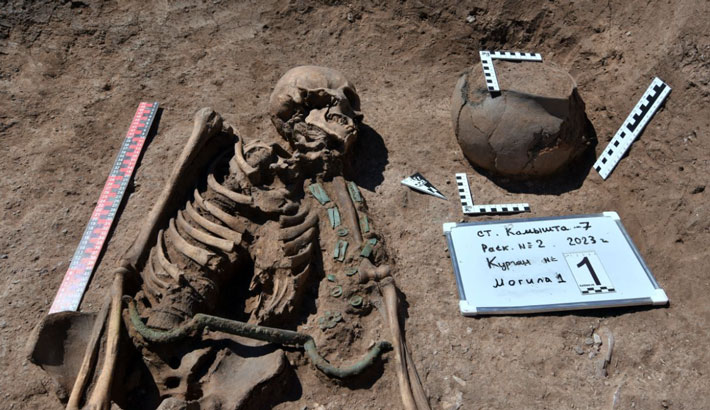 KHAKASSIA, SIBERIA—According to a Live Science report, archaeologist Aleksey Timoshchenko of the Russian Academy of Sciences and his colleagues have found a hooked piece of bronze at the waist of skeletal human remains in an intact, 3,000-year-old grave in Siberia. Similar metal artifacts have been found in Bronze Age graves containing horses and chariots in China, and it is thought that charioteers could use such hooks to affix the reins to their waists, allowing them the use of their hands. The square stone tomb, thought to belong to the cattle-breeding Lugav culture, had been covered with a mound of earth and also contained a bronze knife and bronze jewelry. Team member Oleg Mitko of Novosibirsk State University explained that the inclusion of the bronze belt accessory in the burial may have been symbolic, since remains of chariots have not been found in any burials in Siberia to date. To read about other burials recently unearthed in Siberia, go to "Membership Has Its Privileges."
KHAKASSIA, SIBERIA—According to a Live Science report, archaeologist Aleksey Timoshchenko of the Russian Academy of Sciences and his colleagues have found a hooked piece of bronze at the waist of skeletal human remains in an intact, 3,000-year-old grave in Siberia. Similar metal artifacts have been found in Bronze Age graves containing horses and chariots in China, and it is thought that charioteers could use such hooks to affix the reins to their waists, allowing them the use of their hands. The square stone tomb, thought to belong to the cattle-breeding Lugav culture, had been covered with a mound of earth and also contained a bronze knife and bronze jewelry. Team member Oleg Mitko of Novosibirsk State University explained that the inclusion of the bronze belt accessory in the burial may have been symbolic, since remains of chariots have not been found in any burials in Siberia to date. To read about other burials recently unearthed in Siberia, go to "Membership Has Its Privileges."
Possible Charioteer Found in Bronze Age Grave in Siberia
